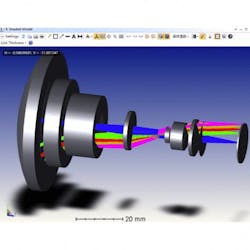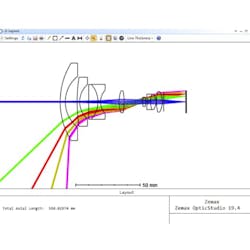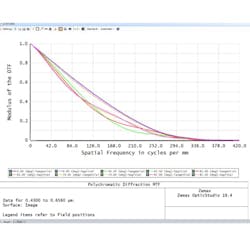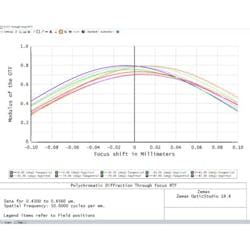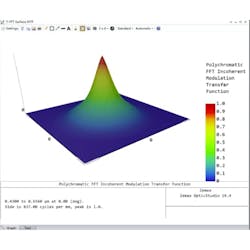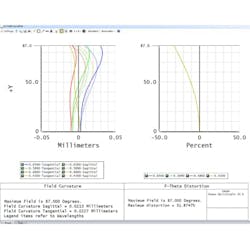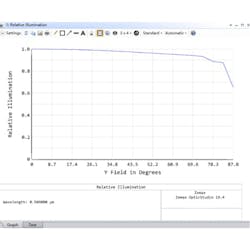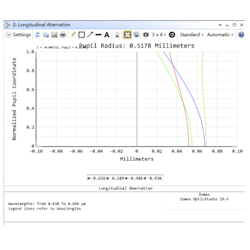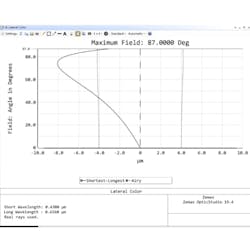A scientific research institute approached Avantier to manufacture custom lenses. This research organization uses high-performance lenses for scientific observation and research, and high image quality and accuracy were required. However, the customer was having problems with distortion and chromatic aberration with conventional lenses, which affected image quality and consistency in situations where high quality images and accurate positional information were required.
Avantier therefore offered this type of lens.
The picture above is a wide spectrum fisheye lens from SO. This lens has a visible spectrum with focal length of 1.2mm, F number of 2.8, and Field of view of 175°.
By controlling the F-θ distortion under 2%, the system can accurately acquire the target position information from the image, which the image quality has a spot RMS radius smaller than a pixel size within 95% of the field of view. At 200lp/mm, each FOV has MTF larger than 0.2, 160lp/mm has MTF larger than 0.3, and 120lp/mm has MTF larger than 0.5. Overall, this lens has excellent optical resolution that is close to the diffraction limit.
Distortion means the loss of similarity between the image and the object. This is mainly due to the image magnification changed after the enlargement of the FOV. According to aberration theoretical analysis, distortion is proportional to the FOV power of three. This is mainly depending on the action of the principal ray, which only affects the similarity between image and the object, and it will not affect the image clarity. Distortion correction will affect the astigmatism and coma aberration correction, and the presence of distortion could appropriately improve the image uniformity, therefore distortion correction is not needed.
For Fisheye lens, because of the existence of aperture aberration, relative illumination on the edges is slightly higher than the center. Due to the need of aberration correction, when appropriately adjusting the vignetting can effectively improve the image quality, but at the same time will decrease the illumination on edges. As shown in the above image, the relative imagine of the image plane is higher than 90%, and the curve shows at least 0.9 and higher in the entire field of view. This indicates the image plane has very good illumination uniformity.
Chromatic aberration can be controlled within the range of 0.04mm, which the secondary spectrum is relatively small and can be meeting the needs of practical application.

